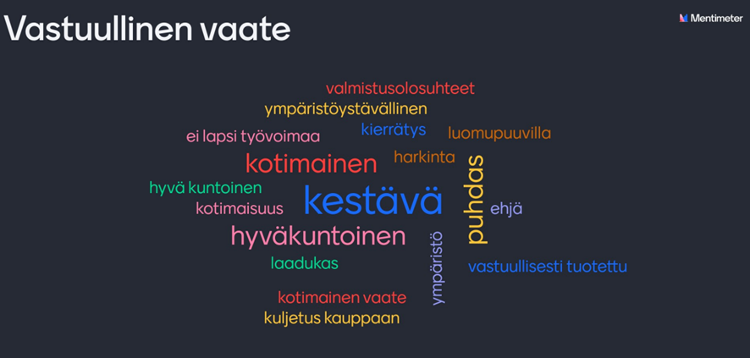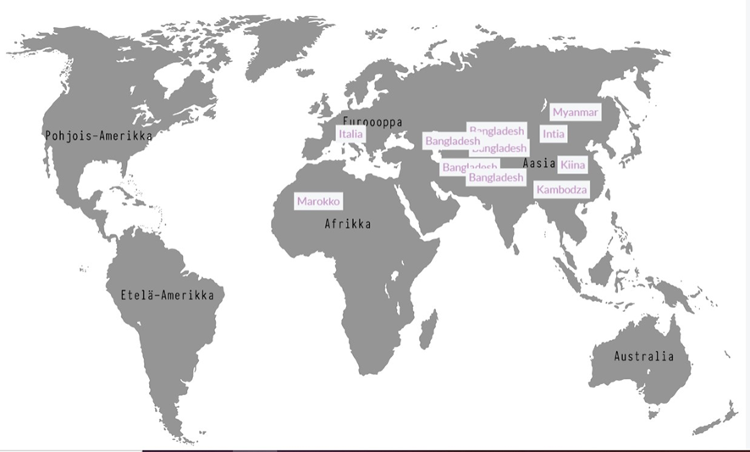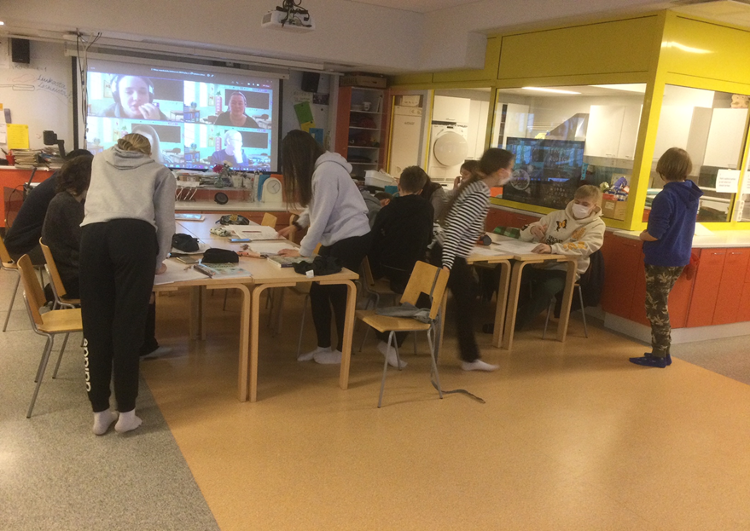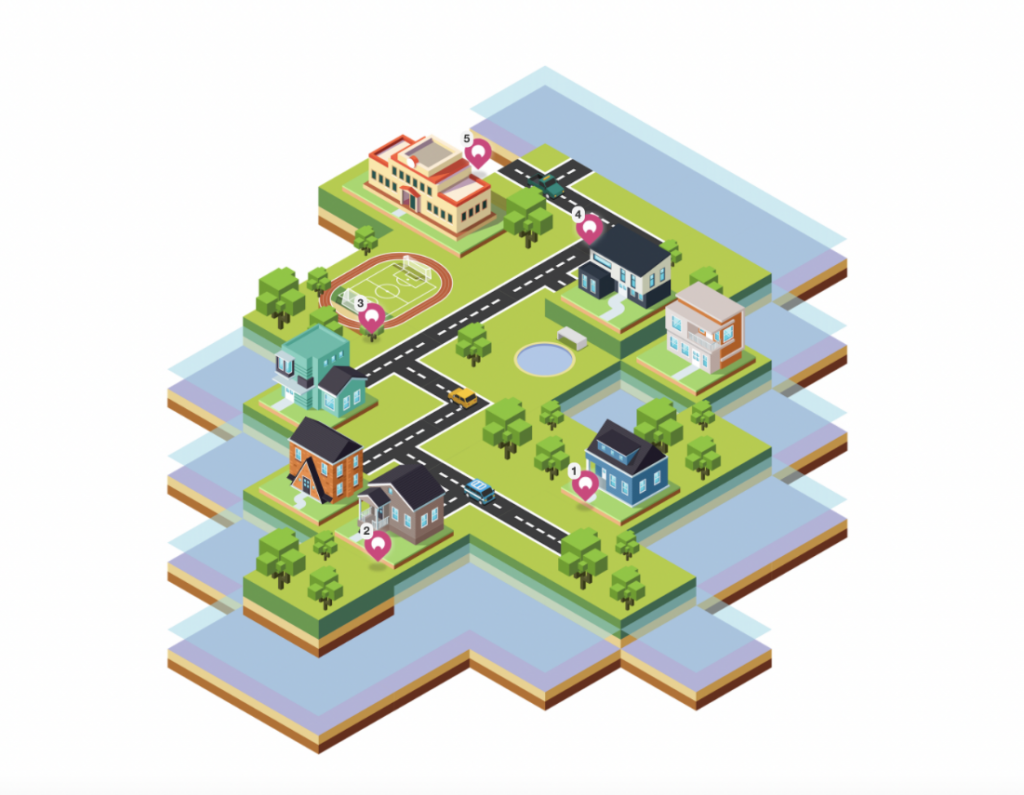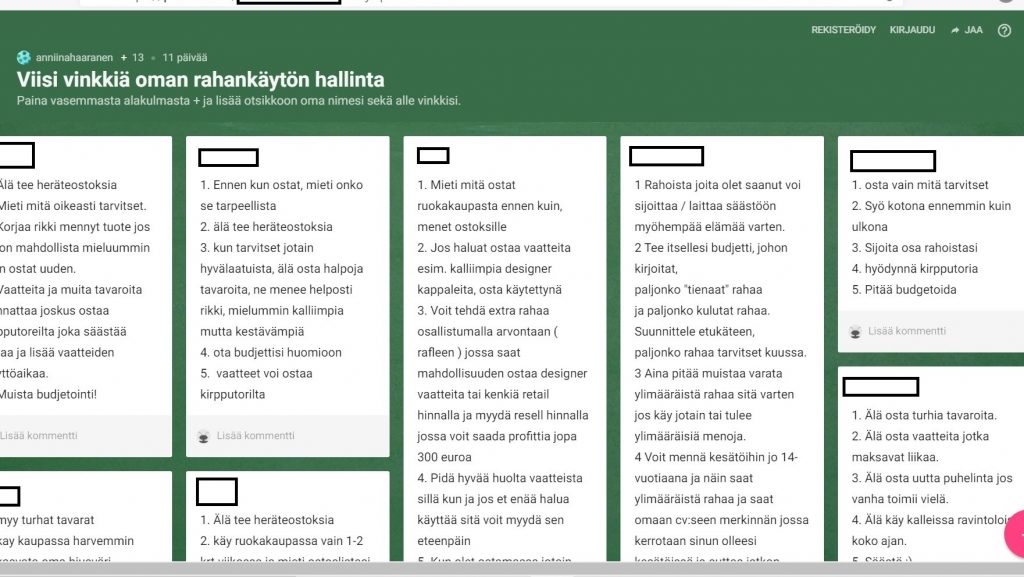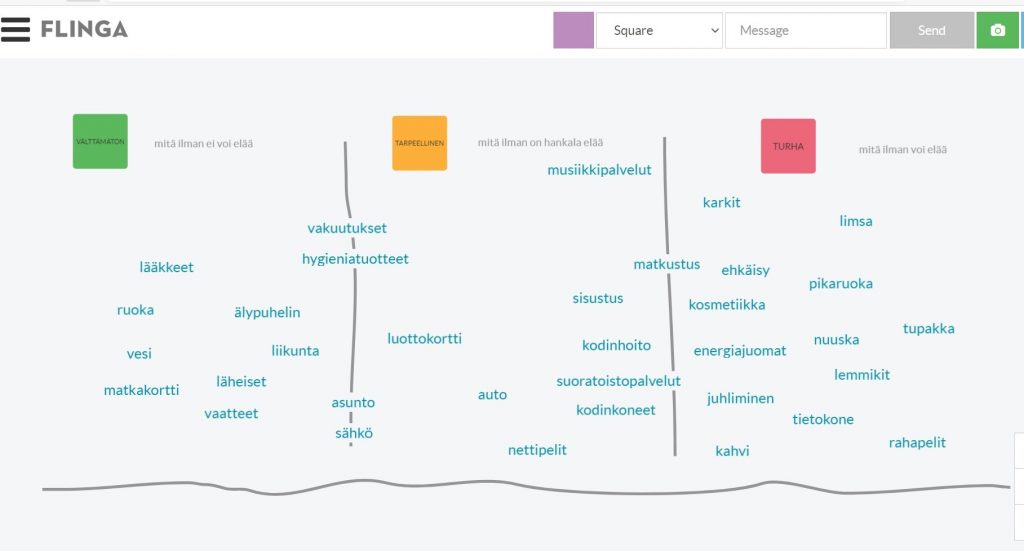The COVID-19 pandemic pushed forward not only distance learning but also e-learning, where teaching happens on digital platforms. Nevertheless, building learning environments online is still somewhat new and unfamiliar ground, especially in home economics. This was the starting point on the course teacher as a researcher. In the course we worked on a development project that we will summarize here. The theme of the development project was “teach differently” and the goal was to bring alternative teaching methods to home economics classrooms in the form of active and interactive distance education.
We designed a lesson around the subject of choosing the right laundry detergent. The lesson was designed and taught for seventh graders in a school in the Helsinki metropolitan area. The pedagogical objective was for students to learn how to choose the right laundry detergent based on the qualities of the textiles and detergents. According to the “teach differently” theme, our goals were to try something creative and new to us that would take us out of our comfort zones. Our idea was to implement videos into home economics teaching and learning.
Our development project was based on social constructivism according to which learning is based on collaboration between the learners, the teacher, the tools, and the environment (Malin & Palojoki, 2015, p. 61). Building on social constructivism we took an approach close to exploratory learning, where learners take part in a collaborative knowledge creation process that starts from learners’ questions based on their own preconceptions and prior knowledge related to the subject. In this approach the students work together, share ideas, and learn to build on the shared knowledge and support each other’s thinking. (Lakkala, 2012, pp. 93–94.)
When we were designing the lesson, we explored the pedagogy of camera pen that was created by Ismo Kiesiläinen. The name refers to the potential to use a camera and video as means of expression in the same way as one would use a pen and text. In the process students are guided to think, act, and work together in photography assignments. It emphasizes students’ activity, creativity, curiosity, and collaborative learning. The teacher’s role is to guide and encourage learners and focus on positive interaction. In this method video is a tool for learning and we as well used it as such. (Kiesiläinen, 2017, pp. 7–8, 19, 28.)
The teaching project in practice
In our project we taught the same lesson three times. Each time we taught two classes simultaneously. The classes were on their separate classrooms, and each had one teacher present in person. We were physically in the facilities of the university and taught the lessons on Zoom-videocall. The videocall allowed the students and teachers in the classrooms to see and hear us in real time, but we were only connected to the teachers’ computers. In this remote setting the students were hesitant to approach us. Because of these aspects the communication relied heavily on the teachers that were present in the classroom.

During the lessons we presented our materials in the form of a PowerPoint-presentation including text, pictures, and videos. Other tools and platforms we used were Google forms and Padlet. In our approach students had very active roles and we the “teacher-researchers” and the present teachers acted as facilitators. On the lesson the students worked on an assignment that was to plan and shoot a video about choosing the right laundry detergent. The students formed groups of 2-4 people and each group was given instructions, short story-like description that presented a problem, and a piece of clothing related to the problem. To solve the problem the students used their previous knowledge and searched for information in the home economics textbooks. Each group wrote a script based on their idea and presented it to us. After the scripts were ready and accepted, the student groups shot their videos on their mobile phones. The videos were then sent to Padlet and watched together. At the end of the lesson the students gave us feedback and evaluated their own learning on Google forms.
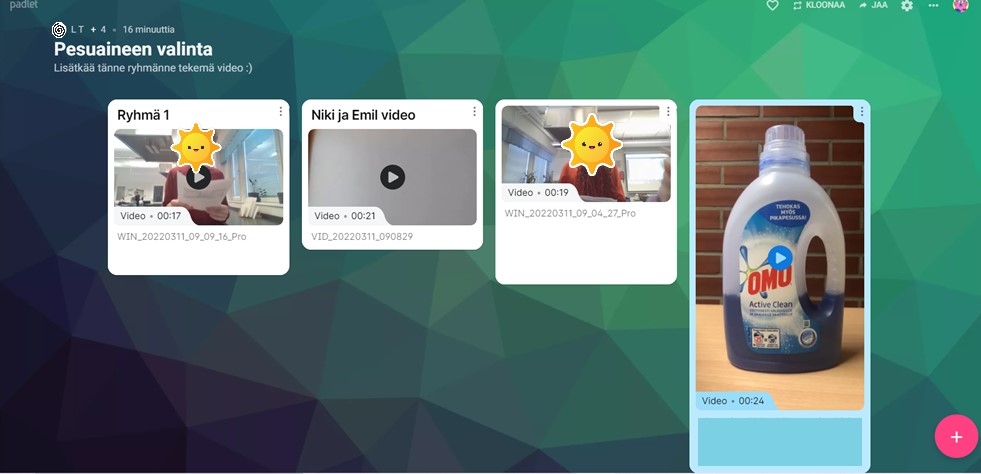
Part of the experiment was to develop and improve the teaching. Originally, we had planned to use document cameras for watching the students’ videos, but the document cameras in the classrooms didn’t work. That is why we choose to use Padlet in the next lessons. After the first lesson, we also made the feedback questionnaire clearer and emphasized the intended content of the videos. We also made it clear that the students could and should ask us for help if needed. These changes were done based on our observations and the feedback we were given.
Reflection and conclusions
This project gave us a chance to reflect and analyze teaching and learning in a way that was new to us. We have developed our skills, acquired knowledge, and above all gained courage to try new and different things in the classroom. The goals we set for our project and lessons were mainly met. Video making in the classroom was something creative and different we had not tried before, and it was new for the students too. Teaching two classes simultaneously and remotely was also new to us and took us out of our comfort zones in a good way. The lesson activities were in accordance with social constructivism as the students were active learners and worked together creatively. Based on our observations video works well as a tool for teaching and learning because it presents information in a diverse way and making videos activates the students to search, process, and present information collaboratively. The weaker area of our lessons was the interaction between us and the students. In the remote setting we could not observe and control what was happening in the classroom in the regular way. Another challenge we faced was the individuality of the students and the groups. We think that these problems could have been fixed with better communication between us and the students.
Sonja Haapala, Mari Kolmonen & Lotta Tapanainen
References
Malin, A. & Palojoki, P. (2015). Flexible learning environments in home economics education. Teoksessa H. Janhonen-Abruquah & P. Palojoki (toim.), Luova ja vastuullinen kotitalousopetus – Creative and responsible home economics education (pp. 61–72). Kotitalous- ja käsityötieteiden julkaisuja, nr. 38. Helsinki: Helsinki University Press. https://helda.helsinki.fi/bitstream/handle/10138/157591/luovajav.pdf?sequence=1&isAllowed=y.
Lakkala, M. (2012). Tutkiva oppiminen. Teoksessa L. Ilomäki (toim.), Laatua E-Oppimateriaaleihin. E-oppimateriaalit opetuksessa ja oppimisessa, pp. 93–99. Opetushallitus. www.oph.fi/fi/tilastot-ja-julkaisut/julkaisut/laatua-e-oppimateriaaleihin-e-oppimateriaalit-opetuksessa-ja.
Kiesiläinen, I. (2017). Kamerakynän pedagogiikka. www.kamerakyna.fi/kamerakynan_pedagogiikka_-_opettajan_kasikirja_(2017)_web.pdf.


